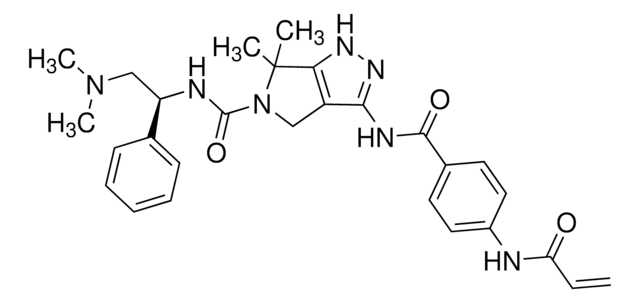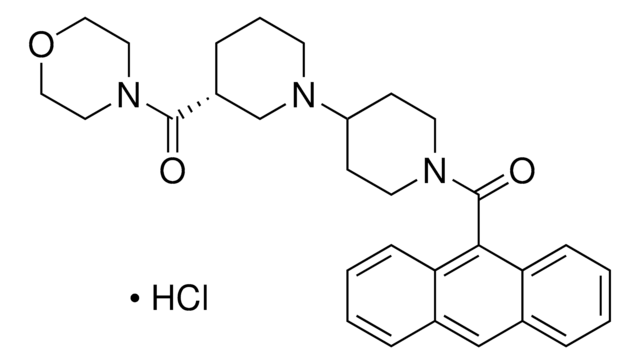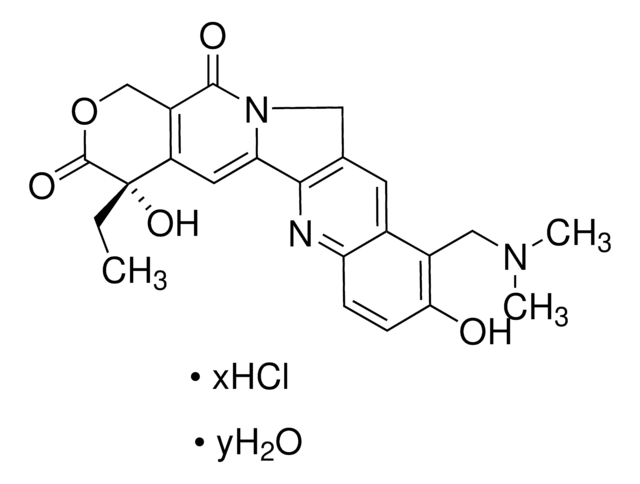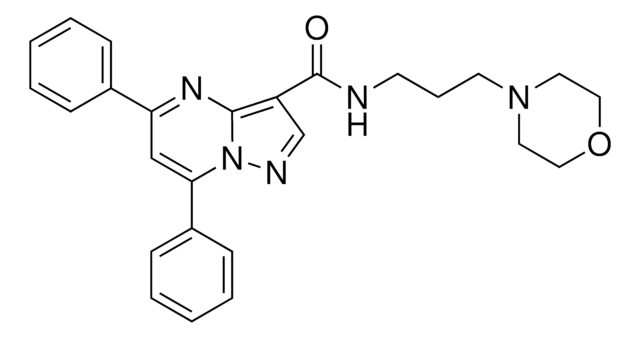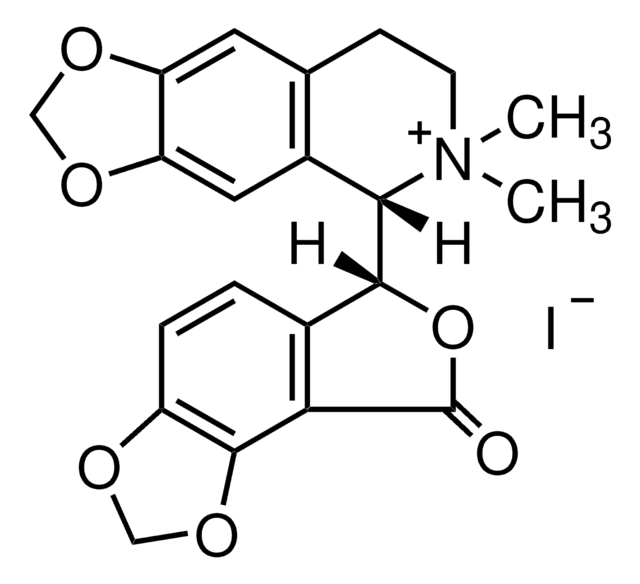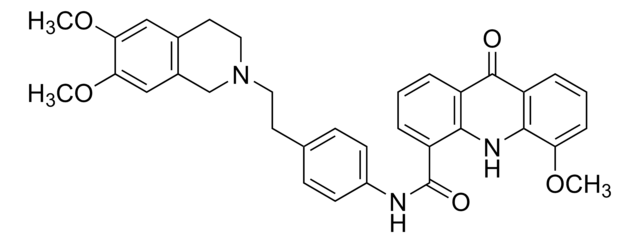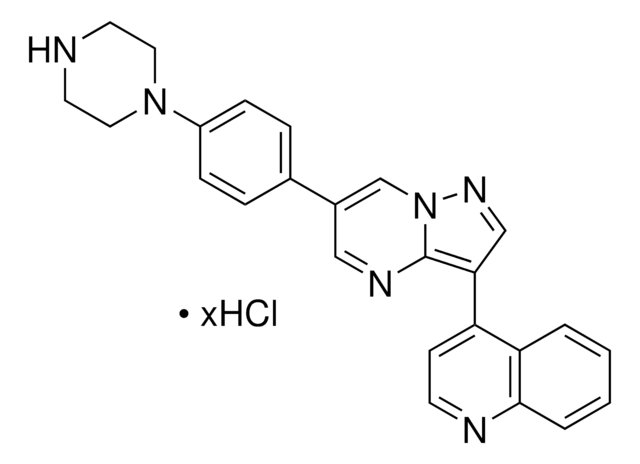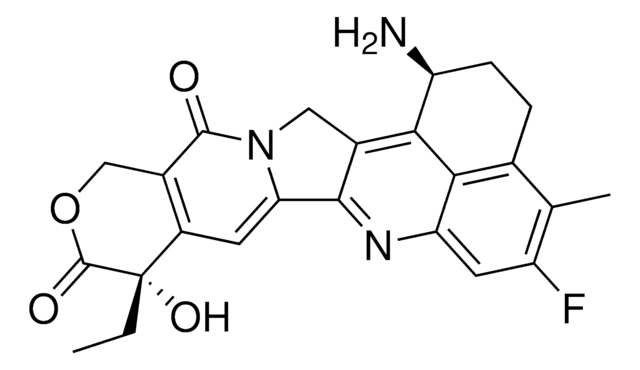SML2179
LDC000067 hydrochloride
≥98% (HPLC)
Synonym(s):
3-((6-(2-Methoxyphenyl)pyrimidin-4-yl)amino)phenyl)methanesulfonamide hydrochloride, 3-[[6-(2-Methoxyphenyl)-4-pyrimidinyl]amino]-benzenemethanesulfonamide, LDC067
About This Item
Recommended Products
Assay
≥98% (HPLC)
form
powder
storage condition
protect from light
color
white to beige
solubility
DMSO: 2 mg/mL, clear (warmed)
storage temp.
−20°C
SMILES string
O=S(CC1=CC(NC2=NC=NC(C3=CC=CC=C3OC)=C2)=CC=C1)(N)=O
InChI
1S/C18H18N4O3S/c1-25-17-8-3-2-7-15(17)16-10-18(21-12-20-16)22-14-6-4-5-13(9-14)11-26(19,23)24/h2-10,12H,11H2,1H3,(H2,19,23,24)(H,20,21,22)
InChI key
GGQCIOOSELPMBB-UHFFFAOYSA-N
Biochem/physiol Actions
Storage Class Code
11 - Combustible Solids
WGK
WGK 3
Flash Point(F)
Not applicable
Flash Point(C)
Not applicable
Regulatory Listings
Regulatory Listings are mainly provided for chemical products. Only limited information can be provided here for non-chemical products. No entry means none of the components are listed. It is the user’s obligation to ensure the safe and legal use of the product.
JAN Code
SML2179-5MG:
SML2179-BULK:
SML2179-VAR:
SML2179-25MG:
Choose from one of the most recent versions:
Certificates of Analysis (COA)
Sorry, we don't have COAs for this product available online at this time.
If you need assistance, please contact Customer Support.
Already Own This Product?
Find documentation for the products that you have recently purchased in the Document Library.
Our team of scientists has experience in all areas of research including Life Science, Material Science, Chemical Synthesis, Chromatography, Analytical and many others.
Contact Technical Service